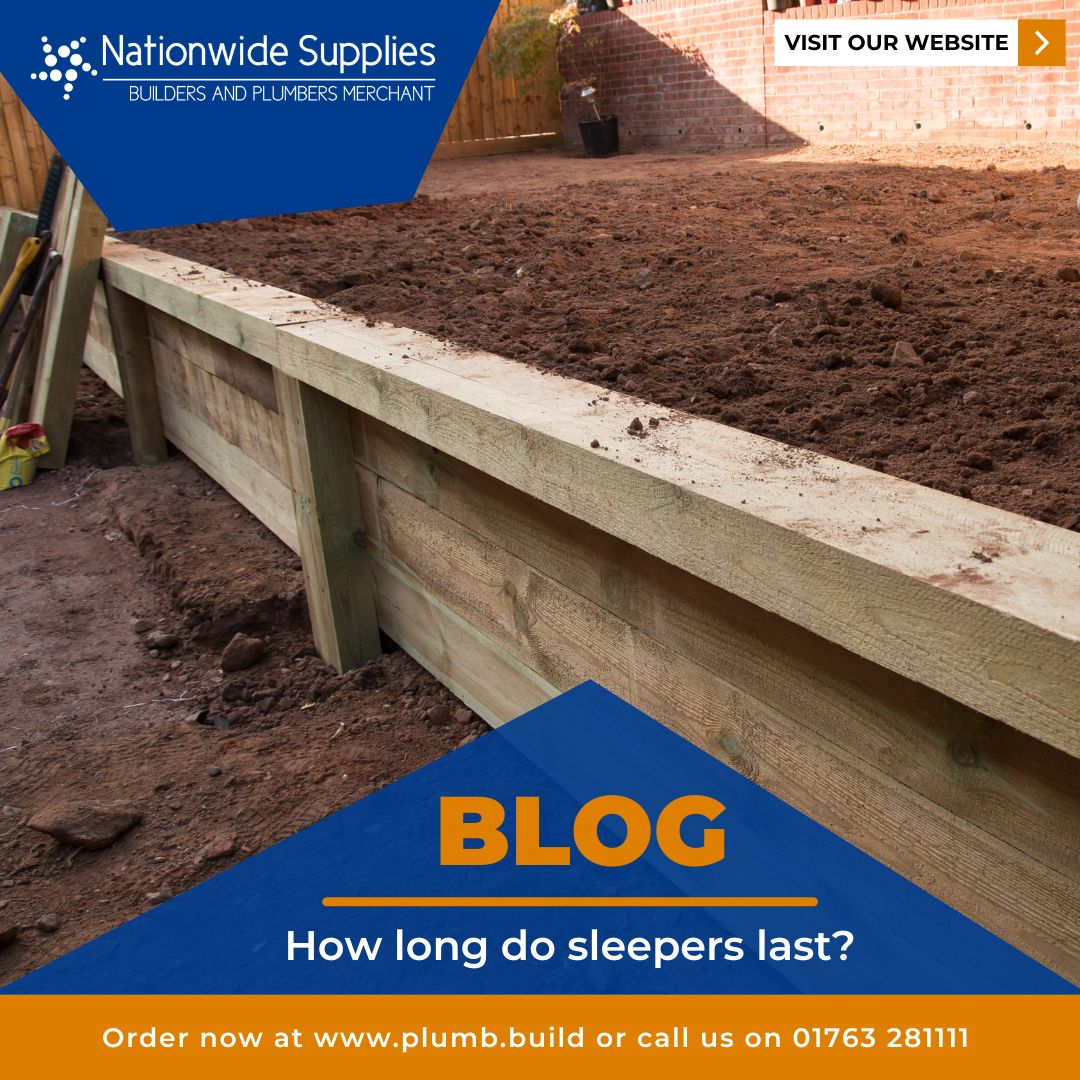Posted: 23rd November 2023 | Author: Adam Brown | Category: Landscaping
Back to news
When you’re choosing materials for a project, such as railway sleepers, one important consideration is durability. This can have a big impact on the ‘real’ price of the project. For instance, a cheaper material that needs to be replaced more often might turn out to be less economical than buying a more expensive alternative that lasts much longer. Alternatively, depending on the price point, the more durable option might not be worth it in terms of financial cost.
Railway sleepers are made from timber, which means they are susceptible to the elements. Over time, the timber will begin to deteriorate, and you will need to replace it if you want the structure to remain - whether that’s a retaining wall, a raised bed or a set of steps. But how soon will that be?
Well, there are several factors that can have an impact on how long your sleepers last. For starters, the type of wood matters. Hardwood sleepers are more durable than their softwood counterparts, so they’ll last longer as a rule. You can also extend the lifespan of both hardwood and softwood sleepers by using timber treatments and preservatives which help to protect the wood from the elements.
Another thing that can affect the longevity of your sleepers is where they are placed. Many tutorials on building garden structures with sleepers recommend laying a sub base of aggregate or concrete, for example, in order to keep the timber from lying directly on the ground. This is because it helps to drain rainwater away from the timber, which decreases the likelihood of the wood staying wet and starting to rot.
To put all that into context, you can expect an untreated softwood sleeper that’s placed directly on the ground to last around three to five years. Add a preservative treatment and your softwood sleeper could last up to 30 years. And if you were to choose hardwood instead, your sleeper may last a whopping 100 years.
So if hardwood sleepers last so much longer than softwood alternatives, why would anyone want to use softwood? Well, the simple answer is that it’s more convenient in nearly every way.
When browsing sleepers to buy, you’ll typically find that softwood sleepers are far cheaper than their hardwood counterparts. As a result, softwood sleepers are more popular, and this might make hardwood sleepers more complicated to get hold of. For instance, while we keep a stock of softwood sleepers on hand ready to fulfil orders, hardwood sleepers are available on request only. That’s because there just isn’t the regular demand necessary to make it worthwhile for us to keep a stock.
Another contributing factor to that is the fact that softwood sleepers are far easier to work with. The terms ‘hard’ and ‘soft’ aren’t used ironically - hardwood sleepers are usually more difficult to cut or drill into, which can make things tricky if you need to cut them down to size to fit your project. They’re also typically heavier than softwood sleepers, so you may need more help in order to get them into position and carry them to and fro.
You might have noticed while browsing for sleepers that they’re often labelled either ‘green’ or ‘brown’. This refers to the treatments applied to the product. While green softwood sleepers aren’t actually coloured green, they are a lighter, sandier brown compared to the dark brown of the brown sleepers. This may have a bearing on which you choose in order to fit the aesthetics of your garden project.
However, it’s good to know that, if you want a different colour, you can paint softwood or hardwood sleepers. It’s a good idea to make sure they’re treated first, because you can’t add a preservative over the paint - and painting before you assemble your project allows you to paint all sides for completeness. As for which paint to use, you can choose from pretty much any outdoor wood paint to get the desired look.
The only restriction comes if you’re planning to use your sleepers as part of a raised bed or planter for growing flowers or food. The chemicals contained within the paint will seep into the soil and may prevent the plants from growing as they should. For example, some exterior paints contain weed killers to prevent plant growth.
If you’re planting flowers, these might not grow at all, or growth might be stunted. But if it’s fruit and veg you’re growing, you need to be doubly careful. After all, any chemicals in the soil will end up in the fruit - and ultimately, inside you. To find the best option here, do plenty of research before painting. It might be worth speaking to a horticulturist to get their input and advice. Or, you could leave your sleepers as they are and enjoy a naturalistic aesthetic in your garden.
Back to news
The Author: Adam Brown
With a background as a Mechanical Engineer, I started Nationwide Supplies alongside my brother with a vision to modernise what seemed a stuck-in-its-ways industry in the builders merchant sector. Since 2011 it has been my goal to source quality products at the correct prices to be able to offer a saving to customers along with high quality customer service which offers quick delivery and superior technical knowledge in the industry.